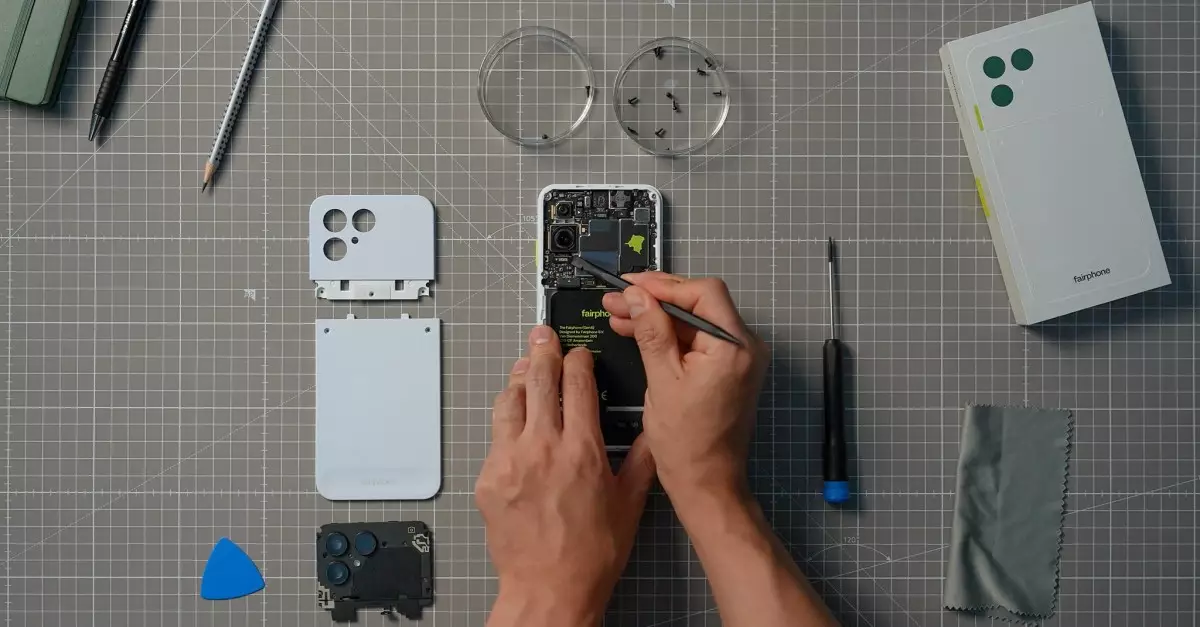In an era where consumer electronics are often synonymous with disposability and environmental harm, Fairphone emerges as a pioneering force committed to fostering sustainability. The release of the Fairphone 6 exemplifies a bold stance against the throwaway culture, emphasizing longevity, repairability, and ethical sourcing. Rather than chasing superficial upgrades or flashy specifications, Fairphone has invested in designing a device that champions durability and user empowerment. This shift signifies a conscious movement within the industry — a recognition that true innovation lies not only in technological advancements but also in fostering responsible consumption.
The Fairphone 6 challenges entrenched industry norms by proving that a flagship-worthy device can prioritize repairability without sacrificing essential features. Its modular architecture, minimalist design, and straightforward repair process underscore a profound respect for the consumer’s right to maintain and upgrade their device. In a market obsessed with speed and constant upgrades, Fairphone reminds us that sustainability is an active choice with tangible benefits, both for the environment and the individual user who can extend the lifespan of their device with minimal effort.
Unparalleled Repairability and User-Centric Design
One of the most striking aspects of the Fairphone 6 is its consistent performance in repairability, a reputation it has cemented through a flawless 10/10 rating from iFixit for consecutive models. Despite the evolution towards sleeker form factors and slimmer profiles, the company manages to retain its hallmark feature — modularity. The fact that only seven screws, operable with a simple T5 Torx screwdriver, stand between you and a quick battery swap exemplifies how thoughtful design prioritizes the user’s ability to maintain their device independently.
This focus on repairability is not merely an aesthetic or philosophical choice; it translates into real-world practicalities. The foray into a softer, more streamlined design does not compromise on serviceability, enabling users to replace key components such as the camera sensors, USB-C port, and other critical parts with ease. While some may criticize the absence of tool-free battery replacements, the inclusion of replaceable parts and the luxurious option of swapping accessory backplates — reminiscent of certain modular phone concepts — highlights a genuine commitment to extend device lifespan.
Moreover, the use of minimal glue and screw-based assembly demonstrates how a balance can be struck between durability, repairability, and design finesse. The waterproof rating of IP55, achieved through sealed screws rather than adhesives, underscores how the company’s engineering choices prioritize both water resistance and user serviceability.
Environmental Commitment and Long-Term Support
Fairphone’s ambitious pledge to support the device for no less than seven years through Android OS updates and a robust eight-year security patch cycle is a significant departure from the industry’s typical release cadence. This long-term support structure not only enhances device longevity but also drives a cultural shift towards responsible ownership, challenging the consumer mentality of frequent upgrades.
Coupled with a five-year warranty and a loyalty program incentivizing repairs, Fairphone encourages users to think differently about their relationship with technology. Rather than viewing their phones as ephemeral commodities, consumers are empowered to invest in a device that is built to last, be repaired, and continuously receive updates.
However, this scheduling of support and repairability comes with limitations. The Fairphone 6 sacrifices some mainstream flagship specs in favor of practicality — its dual cameras are modest, and its Snapdragon 7S Gen 3 processor doesn’t compete with the latest flagship chips. The inclusion of a USB 2.0 port and somewhat basic camera sensors reflects a prioritization of sustainability and repairability over raw power. Whether this trade-off will resonate with a broader audience remains uncertain, but it undeniably positions Fairphone as a leader in the eco-conscious segment.
An Ethical Choice in a Complex Market
Fairphone’s strategic decisions — from pricing to product features — demonstrate a clear understanding that sustainability is not an afterthought but a core value. The higher price point, notably in the US where it costs nearly double compared to Europe, can be rationalized as an investment in ethical manufacturing, longer device lifespan, and a transparent supply chain.
The device’s availability outside traditional markets, with options like Murena’s /e/OS, highlights a broader vision: creating an ecosystem that prioritizes user privacy and open-source principles. This commitment positions Fairphone not just as a hardware manufacturer but as a catalyst for a more responsible and transparent tech landscape.
Ultimately, the Fairphone 6 emerges as a symbol of hope within a technology industry that often neglects the environmental and ethical implications of its products. While it may not satisfy every enthusiast seeking cutting-edge specs, it undeniably challenges the status quo by proving that tech innovation can—and should—be aligned with sustainability, repairability, and user empowerment.


Leave a Reply